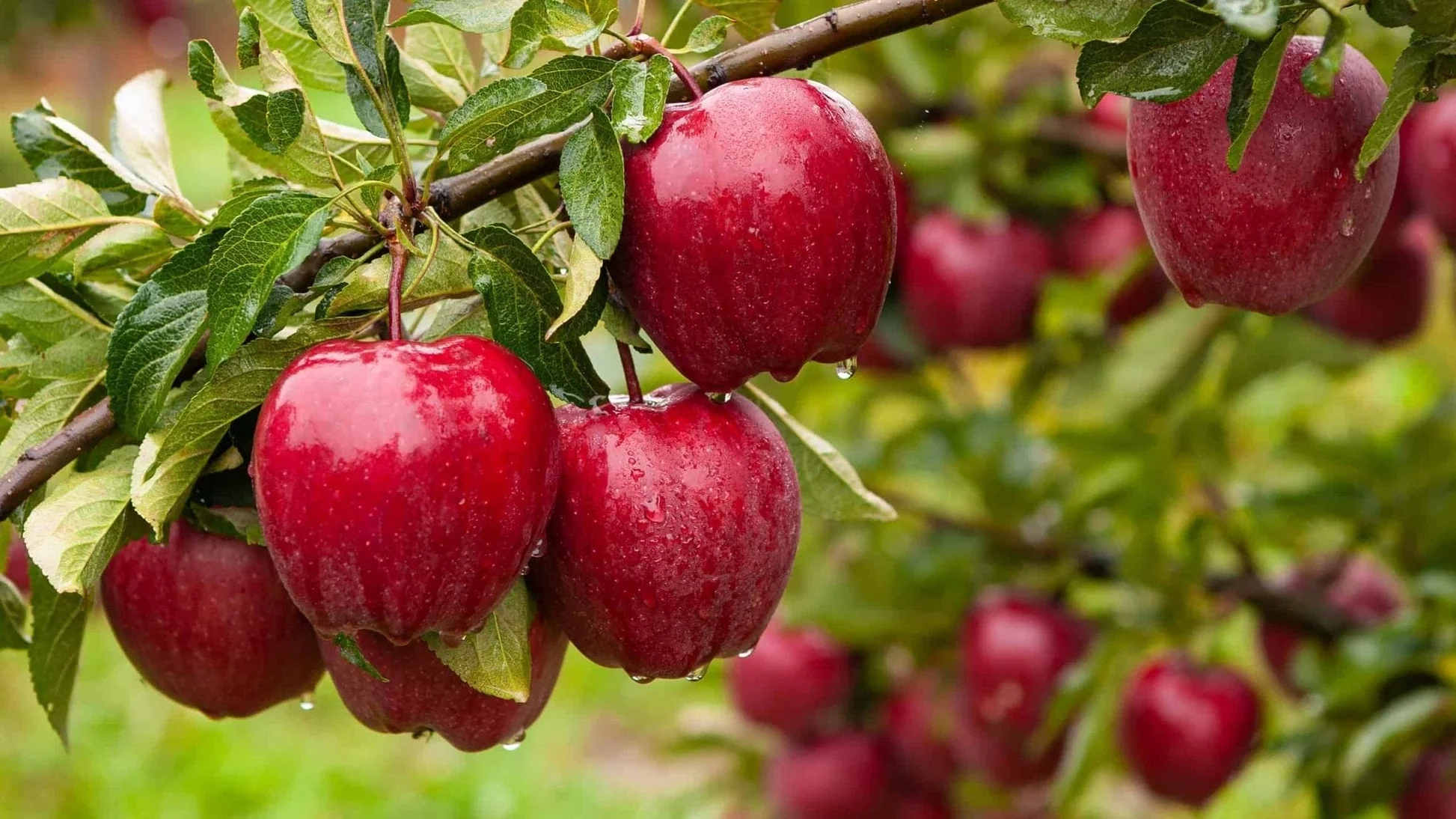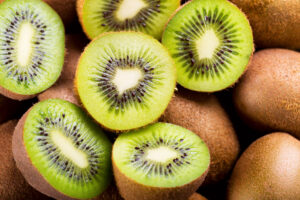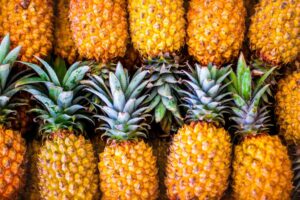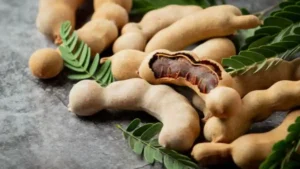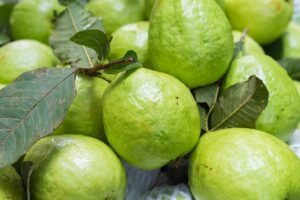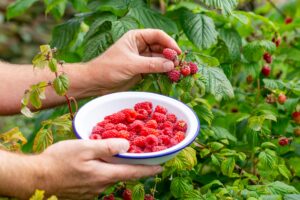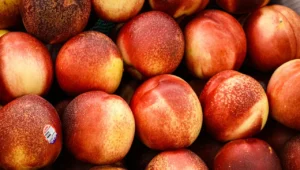How to Grow and Care for Apple Trees: A Complete Guide
Are you dreaming of biting into a crisp, juicy apple harvested from your very own tree? Growing apple trees can be incredibly rewarding, whether you have acres of land or just a sunny balcony. This comprehensive guide will walk you through everything you need to know about growing and caring for apple trees in various settings—from spacious gardens to compact containers.
Understanding Apple Trees
Before diving into cultivation methods, it’s important to understand what you’re working with. Apple trees (Malus domestica) are deciduous members of the rose family that have been cultivated for thousands of years. In the US market, apples remain one of the most popular fruits, with the average American consuming about 28 pounds of apples annually.
Popular Apple Varieties for Home Growers
Choosing the right variety is crucial for success in your specific growing region. Here are some popular varieties well-suited for home orchards:
| VarietyClimate ZoneDisease ResistanceSize When MatureTime to Bearing FruitSpecial CharacteristicsHoneycrisp3-7Moderate12-15 ft3-5 yearsExcellent flavor, crisp texture, good storageFuji5-9Good10-15 ft3-4 yearsSweet, long storage life, late harvestGala4-9Moderate10-14 ft3-4 yearsEarly producer, sweet-tart flavorLiberty3-7Excellent12-15 ft4-6 yearsDisease-resistant, good for organic growingPink Lady6-9Moderate12-15 ft3-4 yearsSweet-tart flavor, needs long growing seasonGranny Smith5-9Good12-15 ft4-6 yearsTart, excellent for cookingDwarf varietiesVariesVaries6-10 ft2-3 yearsPerfect for containers and small spaces |
|---|
For more detailed information on apple varieties suited to specific regions of the US, consult the USDA Agricultural Research Service apple cultivar recommendations.
Starting Your Apple Tree Journey
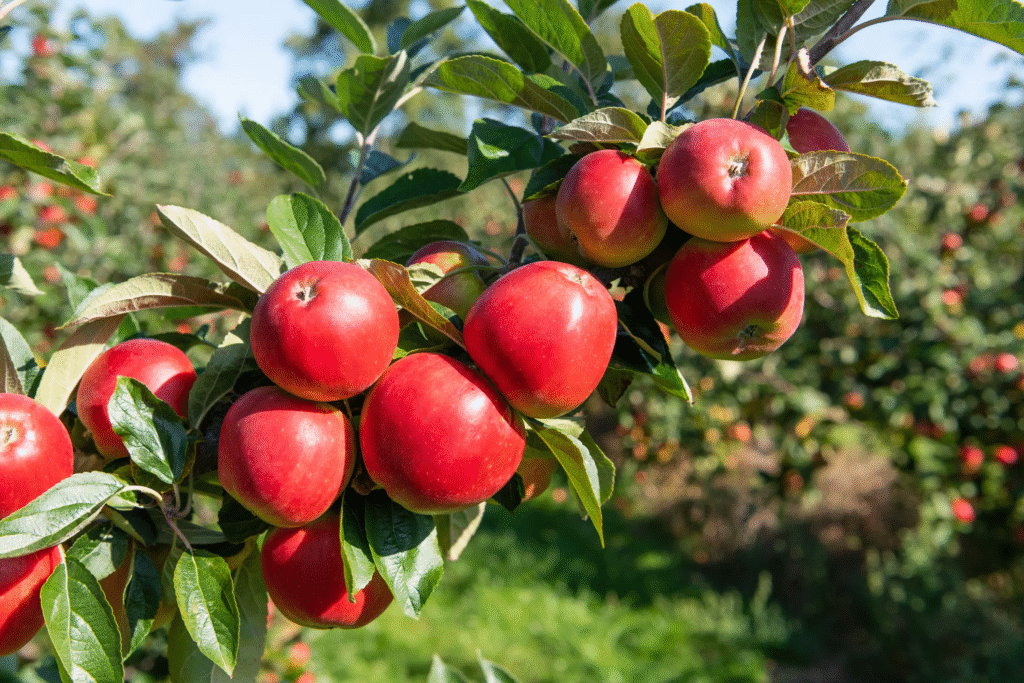
Option 1: Growing from Seed (The Patient Approach)
Growing an apple tree from seed is a fascinating long-term project, but it comes with caveats. Trees grown from seed:
- Will not be true to the parent fruit (due to genetic variation)
- Take 7-10 years to bear fruit
- May produce apples of unpredictable quality
If you’re still interested in this experimental approach:
- Collect and prepare seeds: Extract seeds from a ripe apple and rinse them thoroughly.
- Cold stratification: Place the seeds in a damp paper towel inside a sealed plastic bag in your refrigerator for 70-80 days.
- Planting: Once stratified, plant the seeds 1/2 inch deep in small pots with well-draining potting soil.
- Germination: Keep the soil consistently moist. Seedlings should emerge within 1-2 weeks.
- Transfer: Once seedlings are 8-12 inches tall, transplant them to larger containers or directly into the ground.
Option 2: Nursery Stock (The Recommended Approach)
For most home growers, purchasing young trees from a reputable nursery is the way to go:
- Choose the right type: Select between standard (full-size), semi-dwarf, or dwarf trees based on your available space.
- Select healthy specimens: Look for trees with:
- Straight, unblemished trunks
- Well-developed root systems
- No signs of pests or disease
- At least 3 well-spaced branches (for bare-root trees)
- Consider pollination needs: Most apple varieties require cross-pollination from a different compatible variety planted nearby to produce fruit.
According to the USDA Natural Resources Conservation Service, proper selection of nursery stock is one of the key factors determining long-term success with fruit trees.
Planting Your Apple Tree
In-Ground Planting
The ideal time to plant apple trees is during the dormant season—early spring or late fall in most regions.
- Location selection: Choose a spot with:
- Full sun (at least 6-8 hours of direct sunlight daily)
- Well-draining soil
- Protection from strong winds
- Adequate spacing (12-15 feet between standard trees, 6-8 feet for dwarf varieties)
- Soil preparation:
- Test your soil pH; apples prefer slightly acidic soil (pH 6.0-7.0)
- Amend heavy clay soils with compost to improve drainage
- Add organic matter to sandy soils to improve water retention
- Planting process:
- Dig a hole twice as wide as the root ball and equally deep
- Position the tree so the graft union (visible bulge on lower trunk) is 2-3 inches above soil level
- Backfill with soil, gently tamping to eliminate air pockets
- Create a water basin around the base
- Water thoroughly after planting
- Apply 2-3 inches of mulch around the base, keeping it 6 inches away from the trunk
Container Planting
Yes, you can grow apple trees in containers! This is perfect if you have limited space or want to grow apples on a patio or balcony.
- Container selection:
- Choose a pot at least 18-24 inches in diameter and depth
- Ensure adequate drainage holes
- Consider half-barrel planters, large ceramic pots, or specialized fruit tree containers
- Variety selection:
- Choose dwarf or ultra-dwarf varieties specifically bred for container growing
- Popular container varieties include ‘Honeycrisp,’ ‘Liberty,’ and columnar ‘Urban Apples’
- Potting medium:
- Use high-quality potting mix blended with compost
- Add perlite or pumice for drainage
- Planting process:
- Place a layer of drainage material at the container bottom
- Position the tree so the graft union sits above the soil line
- Fill around the roots with potting mix
- Water thoroughly until water drains from the bottom
Caring for Your Apple Tree
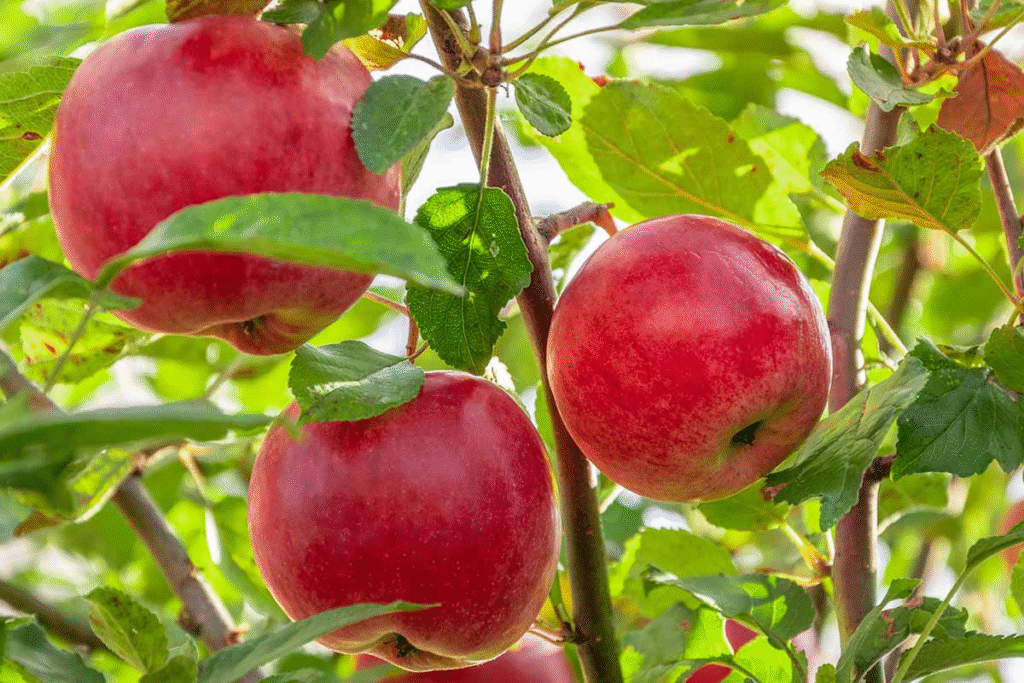
Watering Requirements
Proper watering is crucial, especially during the first two years:
- Newly planted trees: Water deeply twice weekly during the growing season
- Established trees: Provide 1-2 inches of water weekly during dry periods
- Container trees: Check moisture daily, water when the top inch of soil feels dry
- Watering technique: Apply water slowly at the drip line (outer edge of branches)
For more detailed guidance on efficient irrigation practices, consult the USDA Forest Service urban tree care guide.
Fertilization Schedule
Feed your apple trees properly to ensure healthy growth and abundant harvests:
- First year: No fertilization needed; focus on establishment
- Second year onwards: Apply balanced fertilizer (10-10-10) in early spring before bud break
- Application rate: Follow package instructions based on tree size/age
- Container trees: Use slow-release fertilizer or half-strength liquid fertilizer monthly during growing season
- Organic options: Compost, well-rotted manure, or specialized organic fruit tree fertilizers
Pruning Techniques
Regular pruning improves air circulation, sunlight penetration, and fruit production:
- When to prune: Late winter/early spring while trees are still dormant
- First-year pruning:
- Cut the main stem back to 28-36 inches to encourage branching
- Select 3-4 well-spaced branches to form the main scaffold
- Maintenance pruning:
- Remove dead, damaged, or diseased branches
- Thin out crowded areas
- Remove branches growing toward the center
- Maintain an open, vase-like structure
- Summer pruning: Light pruning in midsummer can improve fruit color and quality
Pest and Disease Management
Apple trees can face various challenges. Here’s how to address common issues:
- Common pests:
- Apple maggot: Use sticky traps and clean up fallen fruit
- Codling moth: Apply organic pesticides at recommended intervals
- Aphids: Introduce beneficial insects or spray with insecticidal soap
- Common diseases:
- Apple scab: Choose resistant varieties; apply fungicide before rainy periods
- Fire blight: Prune affected branches; apply copper-based sprays as directed
- Powdery mildew: Improve air circulation; apply sulfur-based fungicides
- Integrated Pest Management (IPM):
- Monitor regularly for early detection
- Use cultural controls first (proper spacing, pruning, sanitation)
- Introduce beneficial insects when possible
- Use least-toxic chemical controls as a last resort
The USDA Agricultural Research Service provides valuable resources on integrated pest management principles that minimize environmental impact while effectively controlling pests.
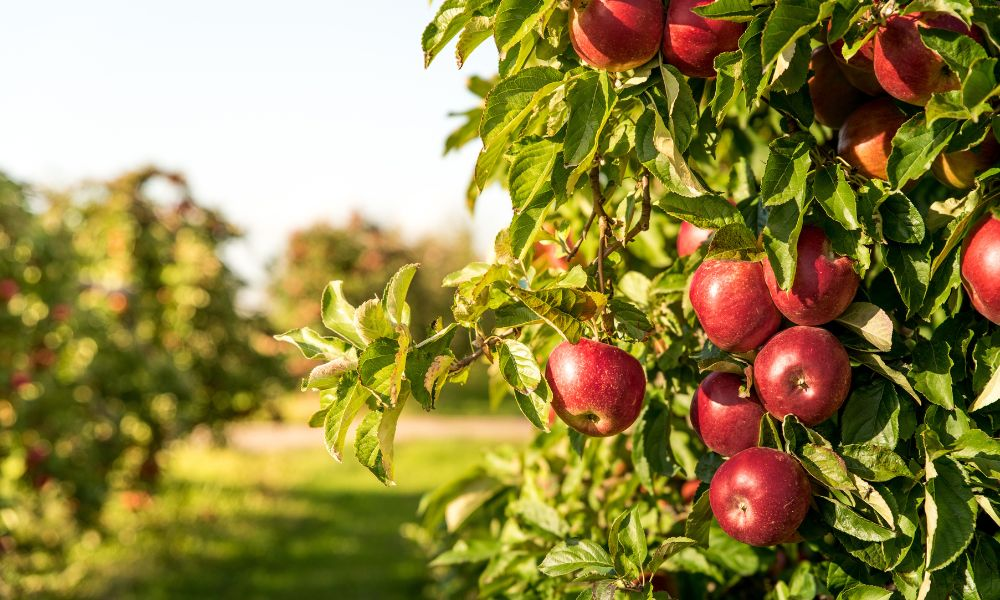
Harvesting Your Apples
After all your care and patience, harvesting will be the rewarding finale:
- Timing: Most apples are ready when:
- The background color changes from green to yellow (on red varieties)
- Seeds turn brown
- Fruits separate easily with a gentle twist and lift
- Harvesting technique:
- Cup the apple in your hand and twist gently upward
- Use both hands to avoid damaging the spur (where next year’s flowers will form)
- Place harvested apples carefully in containers to prevent bruising
- Storage considerations:
- Sort apples, removing any with damage or blemishes
- Store sound fruit in a cool (32-36°F), humid location
- Check periodically and remove any that start to decay
- Different varieties have different storage lives; research yours specifically
Troubleshooting Common Issues
Even experienced growers encounter challenges. Here are solutions to common problems:
- Few or no fruits: Check pollination requirements; ensure you have compatible varieties nearby
- Fruit drops prematurely: Could indicate pest infestation, drought stress, or overbearing
- Misshapen fruits: Often caused by incomplete pollination or certain pests
- Bitter pit (dark spots): Usually a calcium deficiency; apply calcium sprays during growing season
- Leaf yellowing: May indicate nutrient deficiencies or excessive watering
Conclusion
Growing apple trees requires patience and attention, but the rewards are substantial. Whether you’re cultivating a mini-orchard or nurturing a single potted tree on your balcony, the pleasure of harvesting your own homegrown apples is incomparable. By following this guide and adapting these practices to your specific growing conditions, you’ll be well on your way to apple-growing success.
Remember that local expertise is invaluable. Connect with your county extension office, part of the USDA’s Cooperative Extension System, for region-specific advice and troubleshooting assistance. Their experts can provide soil testing services and recommend varieties particularly well-suited to your microclimate.
With proper care and attention, your apple trees can produce delicious fruit for decades to come, becoming a cherished feature of your landscape and a source of pride and nourishment for your household.
